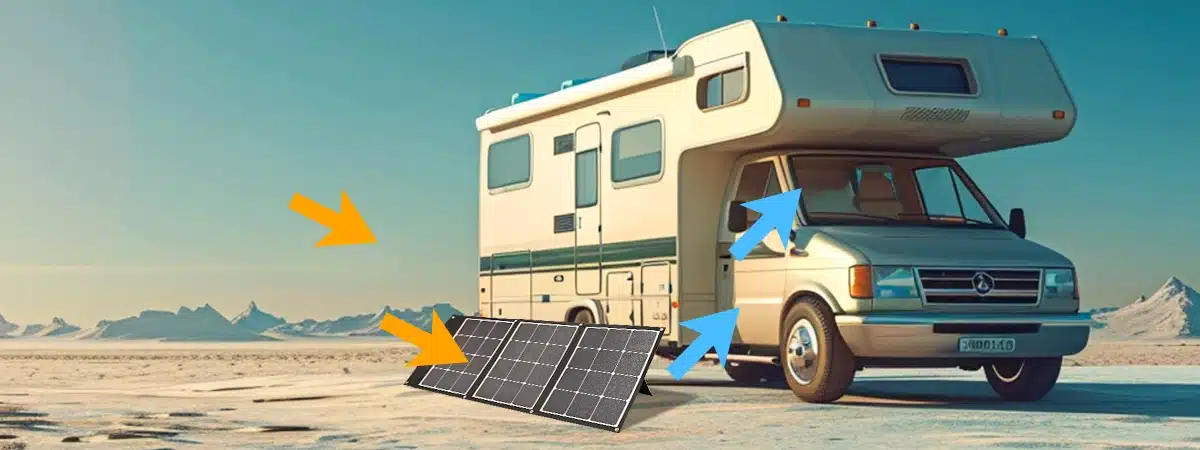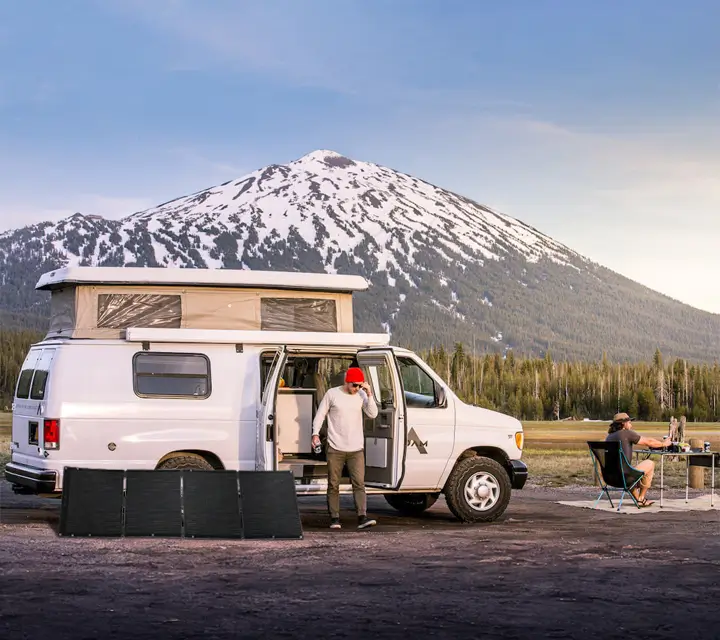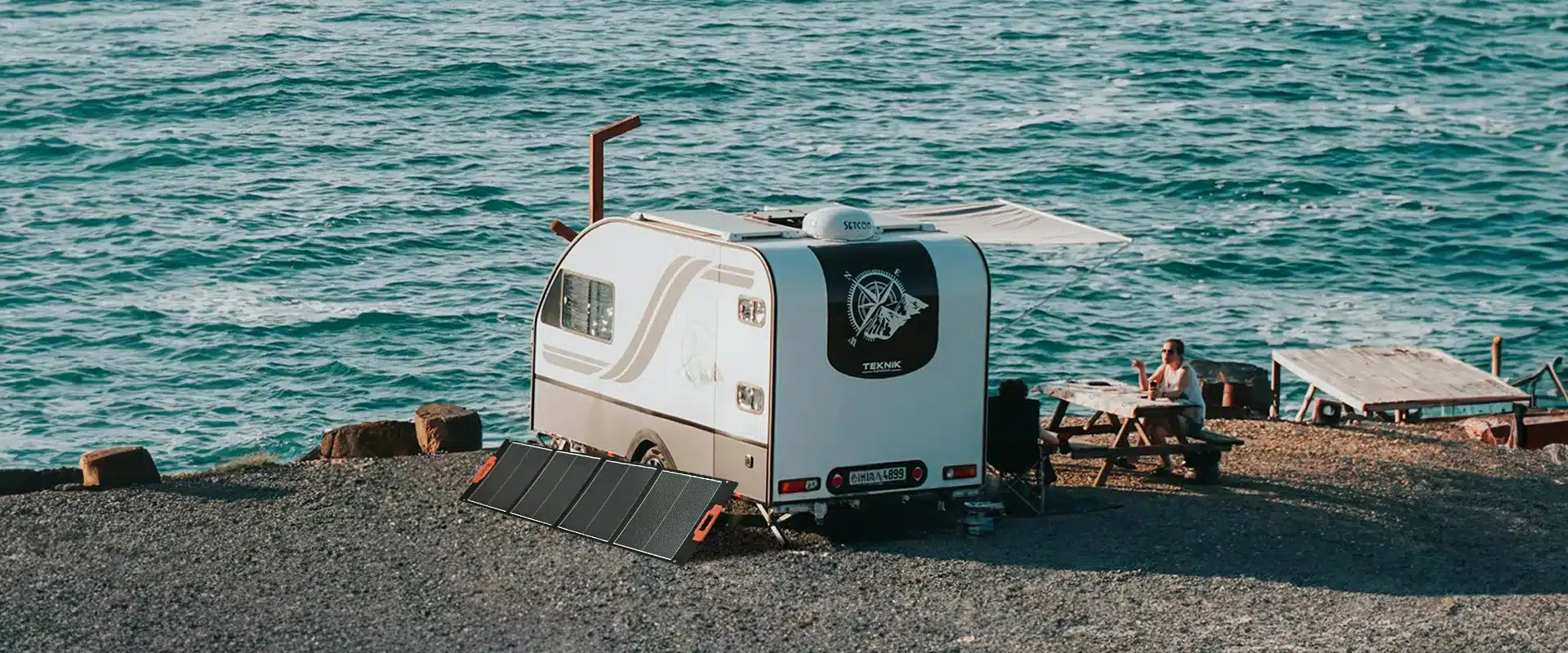How to Use Solar Power in Your RV: How Many Solar Panels Does Your RV Need?
A solar panel system for your RV is perfect for off-grid living and camping in nature. Solar panels on your RV can provide power anywhere in the world, greatly expanding your camping options. However, connecting solar power to your RV isn’t as simple as flipping a switch. The first thing you need to figure out is how many solar panels your RV needs.
Understanding the Basics of RV Solar Panels
Learn everything you need to know about the basics of RV solar panels. Find out how to determine the amount of solar energy required to charge your onboard batteries. Also, understand why it’s important to consult professionals before installing solar panels yourself.

Solar Panels for Off-Grid RV Camping: How Many Panels Do You Need?
Increasing numbers of campers and off-grid RV enthusiasts in the U.S. and around the world are excited about using solar power for their RVs. If you want to explore wilderness and beautiful places that only an RV can take you to, alternative power sources are the only way to keep your lights on. Recent advancements in solar technology have made it more affordable and efficient, making it even more popular among campers.
Solar power is a wonderful resource because it harnesses sunlight, converting it into usable electricity to power RV appliances. While the benefits of solar power have always been evident, it was too expensive for the average consumer until recently. Today, the solar industry is thriving.

Formula for RV Camper Solar Panels

A simple formula to determine the number of solar panels you need for your RV is to divide the monthly energy consumption total by the monthly number of peak sun hours in your location. Then, take that number and multiply it by 1,000. Lastly, divide that total by the solar power rating. See formula below:
For instance, let’s say the monthly electricity consumption for your RV is 6.8kWh, which is 6,800Wh multiplied by .001 to convert it to kWh.
You would multiply 6.8kwh by the number of days in the month, which, in this case, we’ll use 30 days, to get a monthly kWh amount of 204,0Wh monthly.
Now, imagine you are driving through an area that experiences on average 150,3 peak sun hours monthly.
You would next divide your 204,0 monthly kWh hours by the 150,3 monthly peak hours to arrive at 1,35, then divide that by 1,000 to come up with 1,350 watts.
Finally, divide 1,350 watts by 200 to come up with 6.75, which rounds up to 7 solar panels.
RV Solar Disclaimer: Don’t Go It Alone Without Consulting Experts
Although solar power is now affordable, installing a solar system on your RV is a multifaceted task and can be complex for most DIY enthusiasts. It is strongly recommended to consult RV solar installation experts before installing anything on your RV. They can guide you through the process and help you find the parts and equipment best suited for your RV or camper.
The purpose of RV solar panels is to convert solar energy into battery power. The more batteries your RV needs to power, the more solar panels you will need. That said, the first step in generating solar power for your RV is calculating the total amp hours (AH) your batteries can store.
Mounted RV Solar Panels vs. Tilted Solar Panels
Solar panels are designed to face the sun at a 90-degree angle, producing optimal power conversion. When you mount solar panels on your RV roof, they cannot tilt to face the sun at a 90-degree angle, reducing the total wattage delivered to the battery storage. Generally, mounted solar panels can receive up to 75% of the advertised wattage.
Some boondockers prefer ground solar panels, which can be placed at the optimal angle to the sun. However, ground solar panels negate the advantage of passive battery charging while on the road and are costlier to maintain in high winds and harsh weather. Mounted solar panels are better suited for boondockers – just remember to clean the panels regularly.

How to Determine RV Battery Storage and Solar Panel Requirements
A typical solar panel mounted on an RV roof can provide 100 to 160 watts of power – according to manufacturers. A 100-watt solar panel can generate about 30 AH of battery power with 9 hours of sunlight. A standard 12-volt lead-acid battery can hold about 100 AH of power.
Therefore, if you want to charge a 100 AH 12-volt battery on your RV, and each solar panel generates about 30 AH of power, you should have at least 3 solar panels. However, you must also consider that since RV solar panels are mounted, they do not always receive optimal sunlight. As you can see, determining how many panels you need is not as straightforward as it sounds.
How Many Solar Panels Does Your RV Need?
In general, for every 100 amp hours of battery storage capacity, you need 300 watts of solar panel power on your RV. So, if you have two 12-volt batteries or any combination of batteries totaling 200 to 250 amp hours, your solar panel output should be at least 600 watts. To elaborate further – for larger RVs with more batteries, such as 5th Wheels and Class B RVs with 400-600 amp hours of battery capacity, your RV should have at least 1,200 watts of solar panel power.
Solar power is an excellent way to power your RV for off-grid adventures. However, installing a solar system is technically complex, and the last thing you want is to be stranded in the wilderness without power.











